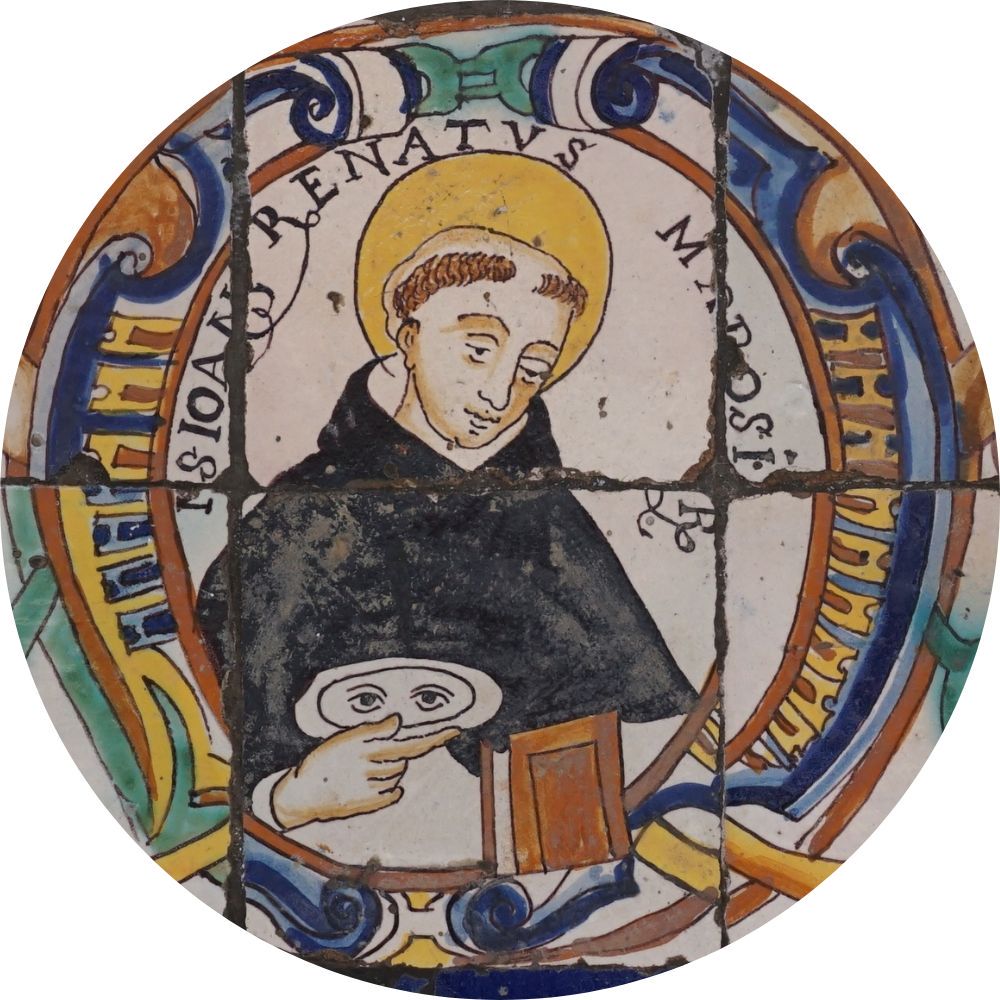René Poyvet
René Poyvet, martyr
(died in 1568)
René (lat. Renatus) Poyvet (Pivet) was born in Angers in the early 16th century. He joined a Dominican monastery in his hometown. He studied in Paris and passed his exams at the Sorbonne, earning a master's degree in theology. Afterwards, he returned to Angers. St. Thomas Aquinas was his guide and master, whose teachings he himself taught. He also became a well-known preacher who fought the errors preached by the Huguenots (French Calvinists) through preaching. In particular, he defended the doctrine of the true and real presence of Jesus Christ in the Blessed Sacrament, and it was this truth, among others, that Protestant theologians undermined. In 1567, he became prior of the Angoulême monastery. One of the main centers of Protestantism in France was located there. In 1562, the convention was decimated by Huguenots and required a strong hand to stop the fighting.
As stressed by François Chamard, Br. René knew that this change could involve martyrdom, so he was even more ready to go there. In fact, the situation for Catholics and the clergy and religious themselves became increasingly dangerous as Protestants began to attack Catholic monasteries and churches more openly. When the Dominican monastery was set on fire and several brothers were murdered, Br. Renè was just in Chartres, where he preached a Lenten retreat in the cathedral. After he had heard of the tragic events, he returned to Angoulême. He immediately invited the Protestant scholars to the disputes. The Huguenots, unable to win in a theological dispute, tried to frighten him, but that didn't help either. They eventually threw him in jail, where he was still persuaded to deny Catholic teaching on the Eucharist, or at least promise not to teach it to the people. He refused and was then sentenced to death. On August 6, 1568, he was dragged out of prison, stripped to the waist and ordered to climb onto a cart. Two executioners were placed at his side to torment him constantly. According to testimonies at the time, "these furies of hell burned his body in the flanks and chest with fiery pincers, while an usher walking in front of the cart shouted to passersby: ‘Voilà le grand prédicateur des faussetés du papisme; voilà celui qui a séduit tant d'âmes, et qui apprenait à paillarder avec la messe’ [‘Here is the great preacher of the lies of the papacy; here is he who has seduced so many souls and who has learned to shriek with the masses’]". On several occasions, he asked his torturers if he could celebrate Mass at least once before he died. He also asked for this that day. Then the Hugenots dressed him in old rags as a chasuble, put a horse bridle around his neck and hands to signify the maniple and stole, and set him up outside the city walls on a bridge on the outskirts of Saint-Cybard, where they erected a scaffold in the form of an altar. They ordered him to climb on top of it and say the Mass. The Dominican actually climbed the scaffolding, from which he gave a moving speech. The executioners, fearing that his words might move his listeners and cause some agitation, rushed at him, dealt violent blows to his mouth with their fists and threw him over the bridge railing into the Charente River. As the river dried up due to the heat, the monk fell on a rock, shattering his entire body. The torturers, seeing that he was still breathing, hit him with a musket.
An account of the martyrdom of Br. René by witness Br. Nicholas immediately went to Pope Pius V. Being moved by his faith and constancy, the Pope wanted to know all the details of this Dominican's martyrdom. The following year the martyrdom of Br. René was spoke about at the general chapter of the Dominican order. The Order of Preachers almost immediately considered him a martyr and recognized his cult, although official approval by the Catholic Church never followed. As François Chamard writes, that although the Church has never officially pronounced on the martyrdom of Br. Poyvet, "the reverence accorded him by the Pope, the Order of Preachers and all ecclesiastical writers sufficiently entitles us to show him the same respect and the same homage."
Bibliography:
- Rechac J. de, Les vies et actions memorables des saints,bien-heureux et autres illustres personnages de l’Ordre des FF . Précheurs. Les beatifiéz de l'Eglise, dont-on celebre les Festes par tout l'Ordre ou en diuers endroits, Auecle Triomphe des Martyrs du même Ordre, vol. 3, Paris 1650, pp. 597-598.
- Aroux de Saint-Vincent J.-Ch., Année dominicaine, ou Les vies des saints, de bienheureux, des martyrs, et des autres personner Illustres, ou Recommandables par leur pieté, de l’un & de l’autre Sexe. De l’Ordre des Frères Prêcheurs, Pour tous les jours de l’Année, avec un martyrologe. Premiere partie de Septembre Recueillies, Amiens 1702, p. 185.
- Trichaud J.M., Les Saints et Bienheureux de l'Ordre de Saint-Dominique, pour chaque jour de l'année, Toulouse 1863 , pp. 441-442.
- Chamard F., Les vies des saints personnages de l’Anjou, vol. 20, Paris-Angers 1863, pp. 380-387.
- Levesque J.-D., L’Ancien couvent des frères Prêcheurs d'Angers, Paris 1961, pp. 108-110.
- Defaye M., Le Protestantisme Assassin au XVIe siecle en France, [Avrillé] 2006 (Vérité sur l'histoire).

